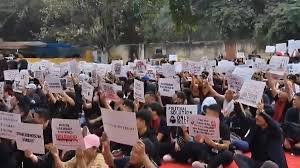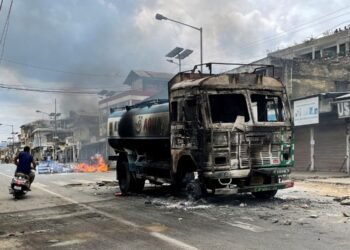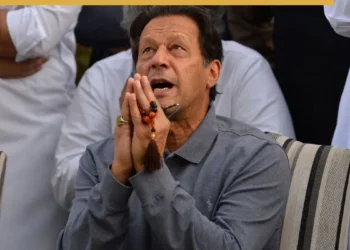As the US warns citizens about crime in India, observers highlight that American cities continue to face record homicide rates, school shootings, and racial violence.
June 22, 2025 | New Delhi, India
The United States Department of State recently issued a Level 2 travel advisory for India on June 16, 2025, urging American citizens to “exercise increased caution” due to concerns over crime and terrorism. The advisory highlights violent crimes, including rape, and restricts travel to specific regions like Jammu and Kashmir, Manipur, and parts of Northeast India. While the advisory paints a concerning picture of safety in India, a data-driven comparison of crime rates between India and the United States reveals a stark contrast, exposing a degree of hypocrisy in the U.S. narrative. This article examines the crime scenarios in both nations, using the latest available statistics, and questions the credibility of the U.S. advisory in light of its own domestic challenges.
Crime Rates: India vs. USA
According to the National Crime Records Bureau (NCRB) of India, the overall crime rate in 2024 was 445.9 incidents per 100,000 people, a marginal decrease of 0.6% from the previous year. Key categories include theft (the most common crime), robbery, assault, and a rise in cybercrimes and crimes against women. The intentional homicide rate in India stands at approximately 2.9 per 100,000 people, while the rape rate is reported at 4.8 per 100,000 in 2021, with 31,204 rape cases recorded in 2023. Uttar Pradesh, Kerala, Maharashtra, Delhi, and Bihar are noted for higher crime rates, with Uttar Pradesh reporting a per capita crime rate of 7.4.
In contrast, the United States faces significantly higher crime rates in several categories. According to the FBI’s Uniform Crime Reporting (UCR) data for 2023, the U.S. violent crime rate was approximately 363.8 per 100,000 people, with specific rates far exceeding India’s in key areas. The U.S. murder rate is around 6.5 per 100,000 people, more than double India’s 2.9. The rape rate in the U.S. is notably higher, with estimates ranging from 36 to 43 per 100,000 people, and 127,216 rape cases reported in 2023 alone—over four times the number reported in India, despite India’s population being roughly four times larger. Property crimes, including burglary and theft, also occur at a higher rate in the U.S., with cities like Chicago, Detroit, and St. Louis reporting violent crime rates exceeding 1,000 per 100,000 people.
READ:  US Join Israel, Bombs Iran’s Key Nuclear Sites in Major Escalation
US Join Israel, Bombs Iran’s Key Nuclear Sites in Major Escalation
Specific Crime Trends
Homicide: The U.S. murder rate of 6.5 per 100,000 is driven by widespread gun violence, with incidents like mass shootings in schools, malls, and public spaces occurring frequently. India’s homicide rate, at 2.9 per 100,000, is significantly lower, with most cases tied to personal disputes or localized conflicts. The U.S. advisory’s focus on India’s “violent crime” ignores the fact that an American traveler is statistically more likely to encounter lethal violence at home.
Rape and Sexual Assault: The U.S. advisory emphasizes rape as a “fast-growing crime” in India, yet the data tells a different story. India’s rape rate of 4.8 per 100,000 pales in comparison to the U.S. rate of 36–43 per 100,000. A 2010 UN Crime Trends Survey further corroborates this, noting 85,593 rape cases in the U.S. compared to 22,172 in India, with per capita rates of 27.3 and 1.8, respectively. While crimes against women remain a serious concern in India, the U.S. advisory’s selective focus overlooks the epidemic of sexual violence in American cities and campuses.
Terrorism and Public Safety: The U.S. advisory cites terrorism risks in India, particularly in Jammu and Kashmir and along the India-Pakistan border. While these areas face sporadic violence, India’s overall terrorism-related deaths have declined significantly, with 2024 data showing fewer than 700 fatalities nationwide. In contrast, the U.S. grapples with domestic terrorism, including white supremacist attacks and politically motivated violence, alongside urban unrest in cities like Chicago, where weekend shootings are routine. The U.S. advisory’s emphasis on India’s terrorism risks seems disproportionate when its own cities face comparable, if not greater, threats to public safety.
A few days ago the US government updated its travel advisory for India: https://t.co/2MjJwabpE7 pic.twitter.com/WojmgGLblk
— Ilhan Niaz (@IlhanNiaz) June 21, 2025
Urban vs. Rural Divide
India’s crime rates are higher in urban areas like Delhi (5 per capita) and Mumbai, driven by population density and economic disparities. However, rural areas remain relatively safe, and tourist hotspots like Goa, Jaipur, and Kerala report low violent crime rates. In the U.S., urban centers like Chicago (2,000+ violent crimes per 100,000) and St. Louis (1,800+) dwarf India’s urban crime rates. The U.S. advisory’s blanket caution for India fails to acknowledge that many American cities pose greater risks to visitors than India’s tourist destinations.
The Hypocrisy of the U.S. Advisory
The U.S. travel advisory’s tone and selective focus raise questions about its intent. Social media platforms like X are abuzz with sentiments accusing the U.S. of hypocrisy, pointing out that a country with higher crime rates and systemic issues like gun violence has little standing to lecture India. For instance, one user noted, “Chicago is a warzone every weekend, and fentanyl is killing 100K Americans a year. Fix your own backyard first.” Another highlighted the disparity in rape statistics, stating, “Annual rapes per 100k: India 2.6, USA 41.4.”
READ: Tribal Body Demands Cancellation of Adani Land Deal in Assam
Critics argue that the advisory amplifies India’s challenges while downplaying America’s own. The U.S. advisory system, as explained by the State Department, assesses risks like crime and terrorism but applies them inconsistently. For example, countries like France and Germany also carry Level 2 advisories due to terrorism risks, yet India’s advisory garners disproportionate attention, possibly due to geopolitical or cultural biases. The advisory’s focus on rape and terrorism in India, while ignoring the U.S.’s higher rates of violent crime and domestic unrest, suggests a double standard.
India’s Safety in Context
India is not without its challenges. The NCRB data highlights persistent issues like crimes against women, cybercrime, and regional unrest in areas like Manipur. However, India’s overall crime rate of 445.9 per 100,000 is lower than the U.S.’s, and its safety index ranking of 66th globally (55.7%) places it ahead of the U.S. (89th, 50.78%) according to Numbeo’s 2025 survey. Millions of tourists visit India annually, with most reporting safe experiences in popular destinations. Enhanced police presence, public awareness, and improved law enforcement have contributed to a 0.6% crime decline in 2024.
The U.S. travel advisory for India, while citing legitimate concerns in specific regions, exaggerates the overall risk and ignores the broader context of crime statistics. India’s crime rates, particularly for violent crimes like homicide and rape, are significantly lower than those in the U.S., and its tourist areas remain largely safe for vigilant travelers. The advisory’s selective narrative, coupled with the U.S.’s own struggles with gun violence, urban crime, and domestic terrorism, underscores a hypocritical stance that has not gone unnoticed. As global travel resumes, a balanced perspective—rooted in data rather than sensationalism—should guide travelers and policymakers alike.
Comparative Crime Statistics: India vs. USA
| Crime Category | India
(2024) |
USA
(2023) |
| Overall Crime Rate | 445.9 per 100,000 | ~1,200 per 100,000 (violent + property) |
| Homicide/Murder Rate | 2.9 per 100,000 | 6.5 per 100,000 |
| Rape Rate | 4.8 per 100,000 (31,204 cases) | 36–43 per 100,000 (127,216 cases) |
| Violent Crime Rate | ~200 per 100,000 (est.) | 363.8 per 100,000 |
| Property Crime Rate | ~245 per 100,000 (est.) | ~1,954 per 100,000 |
| Terrorism-Related Deaths | <700 (nationwide) | ~50–100 (domestic terrorism incidents) |
| Highest Crime Areas | Delhi (5 per capita), Uttar Pradesh (7.4) | Chicago (>2,000), St. Louis (~1,800) |
| Safety Index (Numbeo 2025) | 55.7% (Rank 66) | 50.78% (Rank 89) |
Notes:
- India: Data from NCRB 2024 shows a 0.6% decline in overall crime. Rape cases are underreported globally, but India’s rate is significantly lower than the U.S. Terrorism deaths are concentrated in specific regions (e.g., Jammu & Kashmir, Manipur).
- USA: FBI UCR 2023 data reflects higher violent and property crime rates. Gun violence drives the elevated murder rate, and urban centers like Chicago and Detroit report crime rates far exceeding India’s worst-affected areas.
- Population Context: India (1.4 billion) has four times the U.S. population (330 million), yet absolute crime numbers (e.g., rape cases) are lower in India for several categories.
This comparison underscores the selective narrative in the U.S. advisory, as India’s crime rates are generally lower, and tourist areas remain safer than many U.S. cities.













